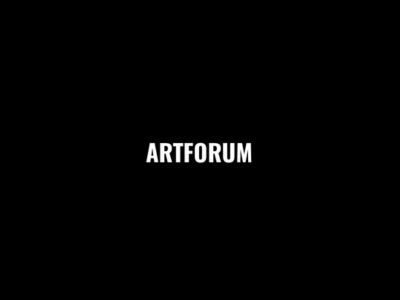Niki de Saint Phalle: Les Nanas au pouvoir
It is, with Niki de Saint Phalle, a strategy of occupation. From an ascribed central point, an expansive force spreads out to cover all surrounding surfaces. With blind vitality, her advance sweeps up foreign bodies in its path, as much as it dissolves separated realities. To the sound of her frenzied dance, frontiers become serpentine and dualisms are absorbed into the trance.
The visual manifestation of the artist's joyfully prolific system is already familiar. Her formal tropes are both part of the collective consciousness, and a feature of everyday landscapes. For most, French-American artist Niki de Saint Phalle (b. 1930, Neuilly-sur-Seine / d. San Diego, 2002) is indissociable from her avatars: the Nanas (Girls) she launched around the world, which seem to have been constantly spawning ever since.
The Nanas, first appearing in the artist's repertoire in 1965, at once exaggerate and cancel female corpulence. A body rises into the air, topped by a pinpoint head, a shape as liberally sketched as a freehand drawing. Nanas take up space, literally and figuratively. They are stout rather than voluptuous, more childlike than sexualised: women-volume, women-presence. And at the same time, they have a colourful lightness about them that masks their corporality with finery made of pattern and colour, of flowers and hearts: women-arabesque, women-armour.
In 1967, Niki de Saint Phalle opened her solo exhibition at the Stedelijk Museum in Amsterdam entitled Les Nanas au Pouvoir. The sexual revolution was growling, not yet ready to roar. The Nanas preceded and outlasted it, amplified and pluralised it. What started out as drawings, then engravings, bas-reliefs, and finally sculptures, went on to occupy new territories as part of architectural projects for public spaces (cathedrals, private homes, fountains, and housing estates) or as mass-produced 'multiple originals' affordable and accessible for all to enjoy at home: inflatable toys, perfumes, jewellery, scarves, and trinkets.
As Nanas have since effectively taken possession of their environment, of all circulation spaces and every inscribable surface, they inhabit us in a perpetual present rather than being something we look at in the here and now. At Galerie Mitterrand, we can stop and consider the Nanas once more. In the centre rises the monumental Le Péril Jaune (1969), made of painted polyester resin, the 'peril' being the threat to the established order that she and her sisters (the smaller mounted sculptures and the Nana Boa (1983) and the Nana Power lithographs (1970)) represent.
This threat is to external markers of identity, whatever form they take, multiplied in yellow, black, and pink versions. The Nanas are a glitch in the normative sexual matrix, not least because they expand the feminine gender to include all of humanity, effacing this distinction in favour of an infinite number of variations on an indeterminate self. Our thoughts travel back through time (via a trans-temporal echo) to the injunction in the Laboria Cuboniks collective's Xenofeminist Manifesto (2015) to 'give bloom to a thousand genders', a kind of 'savagely anti-naturalist' cyber-feminist injunction in alignment with the following one: 'to cultivate a practice of positive liberty ' a liberty of 'rather this' instead of 'with regards to that''.
From this back and forth between two eras, a deeper, common ideological position emerges: one concerned with the relationship to technique (in the broader sense of the term) as well as with the ideological standpoint put forth in the introduction to this text, under the premise of a strategy of occupation. If XF (for XenoFeminists, a reduction not unlike Niki's Nanas) try to reappropriate 'existing technologies to rebuild the world', Niki de Saint Phalle operated in a similar way. Her occupation was not limited to the visual space, rather, it extended into that of available physical tools, by transforming the means of production to attain inclusive ends.
The manner in which the Nanas were historically received flows directly from this. Because Niki de Saint Phalle chose to address everyone rather than the market; because she integrated her multiple originals in the nascent economy of consumer society to earn her financial autonomy; and, finally, because she manipulated capitalism with the aim of reshaping its course from the inside out, Niki de Saint Phalle effectively alienated herself from the early 1980s onwards from a segment of the art world that was tethered to a set of bourgeois values that she savagely and repeatedly rejected.
In this way, even today, the 'liberty to' must still be defined with regard to this Other, more restrictive, 'liberty with regard to'. Before anyone had ever heard of 'capitalist realism', the subject of theoretician Mark Fisher's eponymous benchmark essay (Capitalist Realism: Is There No Alternative?, 2009), Niki de Saint Phalle had already understood the urgency of working within an economic system that would soon evolve into a general Zeitgeist that would affect political thought and cultural production while simultaneously restricting thoughts and actions.
Because she laboured during her own boom, and saw the neo-liberalist system that validated the hypothesis of capitalistic realism arising, Niki de Saint Phalle was already a realist in her artistic practice, who managed to maintain a utopian vision in her forms. Her Nanas, majestic dea ex machina, walk this tightrope. They can only dance and shake themselves so joyfully upon it because the spirit of this frantic sense of urgency fills them with life.
Ingrid Luquet-Gad
-

Review - Niki De Saint Phalle
Agathe Jaffredo, Artforum, January 31, 2022 This link opens in a new tab. -

Niki De Saint Phalle : Les Nanas Au Pouvoir
À La Galerie MitterrandVirginie Chuimer, La Gazette Drouot, December 3, 2021 This link opens in a new tab. -

Le Féminin En Majesté - Niki De Saint Phalle
JUDITH HOUSEZ, Les Échos, November 10, 2021 This link opens in a new tab.







